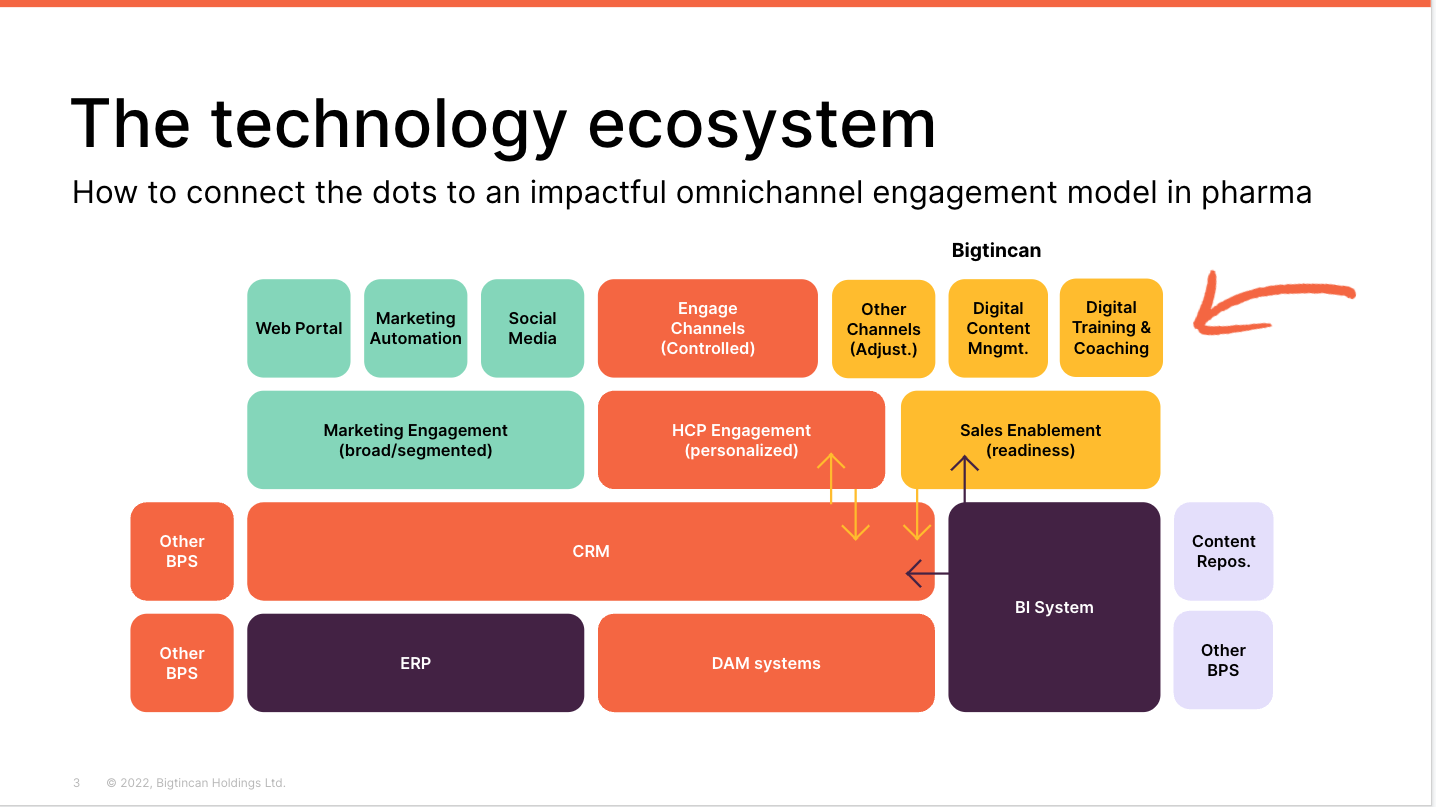Better pharma digital communication is a top-down solution that improves outcomes for everyone from the patient to the pharma provider.
“As pharmaceutical companies reshape their commercial models to prepare for the uncertainties ahead, personalization and digital enablement will be crucial to launch success in the new environment.” - McKinsey Ready for launch: Reshaping pharma’s strategy in the next normal
Here are 10 needs patients, HCPs, and commercial pharma teams have that easier, clearer communication can solve— especially with the right tools and strategies.
10 things patients need today from healthcare providers
What do patients want?
With the long-term trends for patient empowerment and greater access to information, the answers are changing. Expectations are higher. Get it right and you can not only improve patient outcomes with new kinds of services, but build excellent relationships with HCPs by clearly demonstrating value.
Here are 10 patient needs to consider:
- Credible information: There are now huge resources available online. The challenge for patients is to sort the credible and up-to-date information from the unclear, misleading or false.
- More say in treatment: Patients, especially younger ones, are demanding more involvement in treatment decisions. They want to fully understand their condition and the long-term care plan.
- Product support: Patients want more than an in-pack leaflet. There is a role for industry to help doctors help patients by providing services that go beyond the treatment itself.
- Personalized information: On-demand, real-time, and ‘just-for-you’ experiences are the new normal. The same quality of communication is increasingly expected of healthcare too.
- Direct contact with HCPs: While patients are looking elsewhere for information, face-to-face engagement with healthcare professionals remains the priority – and why the focus is on high-quality interactions.
- Well-informed HCPs: Empowered patients require not only good information sources but expect healthcare professionals informed on the latest data to enable a real and deep discussion.
- Motivation support: People don't want novelty for novelty’s sake but there is interest in motivation assistance with treatment – either through good communication or new kinds of approaches like gamification.
- On-demand knowledge: Increasingly there is a need to differentiate between the kind of information that is delivered in the consulting room and that which is available subsequently.
- Family involvement: Many patients desire to keep their family informed about their condition, educated on its treatment and empowered to help as required.
- Better health: Fundamentally people just want to get well. The trend for patient empowerment is actually a clear demonstration of this, being an attempt to take more control over treatment and get the best possible outcome.
10 things healthcare providers need from pharma companies
What do doctors want?
Get the answer right and you build excellent relationships with HCPs and ensure a bright future for your innovation. Yet the answers are changing.
In addition to the longstanding requirements from pharma and medtech companies to deliver scientific innovation, HCPs are increasingly looking for an improvement in the level of service provision.
Here are 10 HCP needs that, once met, can positively impact your HCP engagement:
- Good outcomes: Ensuring that the right drug is delivered to the right patient in the right way. It’s not just the drug but rather the whole package that counts.
- Up-to-date information: Building HCP knowledge on scientific breakthroughs and new developments in existing therapies.
- Transparency: Providing the full picture of a treatment with complete honesty and no surprises.
- On-demand information: Enabling HCPs to access trustworthy information anywhere at any time (even in time-pressed clinical situations).
- Personalized channels: Ensuring that HCPs get information that’s truly relevant – meeting their specific needs.
- Good industry relations: A partnership approach, centered on patient care, that continually builds trust.
- Good patient interactions: The ability to communicate face-to-face with patients in ways that are clear and impactful.
- Patient information: Trustworthy up-to-date content that can be shared with patients (and their families).
- Support for treatment adherence: Enabling HCPs to educate patients and ensure that they get the most from their treatment.
- High-value services: Delivering real value (not gimmicks) that have a positive and lasting effect on treatment outcomes.
10 things companies need for better pharma digital communication
What does pharma want today?
This is a question that we as digital communication software providers continually ask ourselves and our partners. The hard part? The answers are continually changing.
This is partly in response to an emerging landscape — one that has new players, new voices, and where the roles of traditional decision-makers are shifting. New needs have also arisen from changing business models. Companies that are building themselves around patient centricity, or an outcomes-based model, need to act in different ways and require the tools to do it.

So what’s changed? Here are 10 things that pharma and medtech marketers are now looking for when it comes to pharma digital communication:
- Payer engagement tools: With prescribing decisions being taken more centrally by governments, health authorities, and insurance companies, new kinds of communications are needed that resonate with these new audiences.
- Value-adding services: Pharma sees that it can add value far more quickly with services than via therapeutic product pipelines – especially if digital technology is deployed more effectively.
- Outcomes-focused communications: With the focus moving to helping doctors solve their treatment challenges, HCP interactions are not just required to create product awareness but to help HCPs solve practical problems like screening, diagnosis, and adherence.
- More control: As the options for digital communications increase with ever more channels, so does the complexity of managing it. Marketers want true content systems that are scalable and reduce human error.
- Connected channels: There’s a growing desire for an ecosystem of connected channels rather than a series of isolated initiatives. Companies are increasingly asking how to provide coherent, holistic customer experiences.
- Help doctors communicate: Pharma is looking to support HCPs with their patient interactions by providing credible information on-demand, together with the means to deliver it to patients in fast, simple, and direct ways.
- Help patients communicate: With empowered patients seeking information online, provide patients with sufficient information that will enable them to go to their physician and ask the right questions.
- Actionable data: Now that data is flowing in from digital channels, there’s a growing focus on managing it effectively and putting the insights to work by placing it in the hands of people who can affect change.
- Automation: The industry is interested in the potential of AI and machine learning systems to provide assistance to customer-facing staff and automate services to deliver 24-7 help through innovative technologies like chatbots.
- New skills: With the pharma landscape changing, new kinds of skills are in demand – customer insights analysis, data analytics, innovative pricing and reimbursement thinking, health economic modeling, and expert knowledge of devices, services & software.
Find out how Bigtincan can help you improve pharma digital communication at your company.
